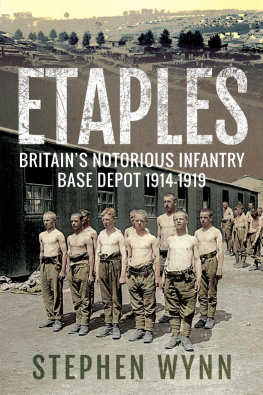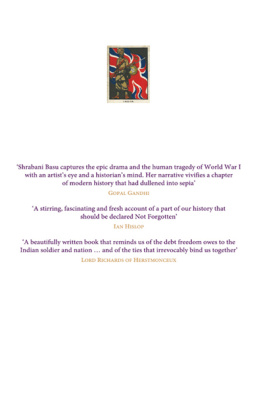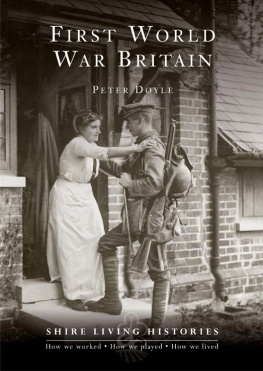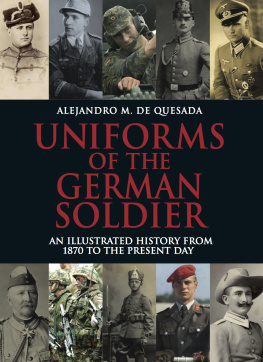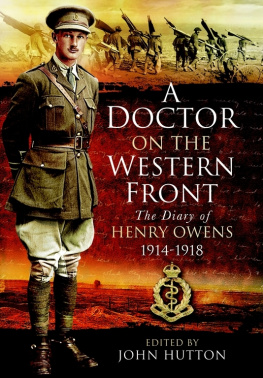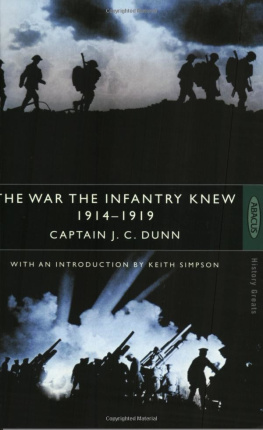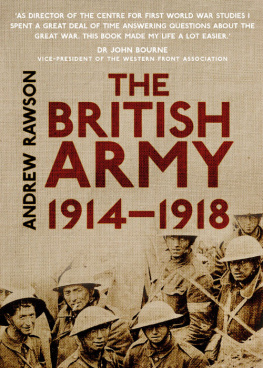Teachers at the Front 19141919
To the British and Dominion teachers who fought and died in the Great War of 1914 to 1919.
As they made in common an offering of their lives, they each received praise that will not grow old and the noblest of tombs, not in the place where they lie, but rather where, on every occasion calling for word or deed, their fame is left behind them in everlasting remembrance.
Pericles Oration, Thucydides II. 43
Teachers at the Front 19141919
Barry Blades
First published in Great Britain in 2020 by
Pen & Sword History
An imprint of
Pen & Sword Books Ltd
Yorkshire Philadelphia
Copyright Barry Blades 2020
ISBN 978 1 47384 885 6
eISBN 978 1 47384 886 3
Mobi ISBN 978 1 47384 887 0
The right of Barry Blades to be identified as Author of this work has been asserted by him in accordance with the Copyright, Designs and Patents Act 1988.
A CIP catalogue record for this book is available from the British Library.
All rights reserved. No part of this book may be reproduced or transmitted in any form or by any means, electronic or mechanical including photocopying, recording or by any information storage and retrieval system, without permission from the Publisher in writing.
Pen & Sword Books Limited incorporates the imprints of Atlas, Archaeology, Aviation, Discovery, Family History, Fiction, History, Maritime, Military, Military Classics, Politics, Select, Transport, True Crime, Air World, Frontline Publishing, Leo Cooper, Remember When, Seaforth Publishing, The Praetorian Press, Wharncliffe Local History, Wharncliffe Transport, Wharncliffe True Crime and White Owl.
For a complete list of Pen & Sword titles please contact
PEN & SWORD BOOKS LIMITED
47 Church Street, Barnsley, South Yorkshire, S70 2AS, England
E-mail:
Website: www.pen-and-sword.co.uk
Or
PEN AND SWORD BOOKS
1950 Lawrence Rd, Havertown, PA 19083, USA
E-mail:
Website: www.penandswordbooks.com
Maps

1. The Western Front. (Knight, W.S.M. The History of the Great European War: its Causes and Effects , p.155)

2. Aubers Ridge and Fromelles. ( The Times History of the War , LXXIV, p.381)

3. Loos and Lens. ( Public domain )

4. High Wood. ( Trench Map. Longueval. 57C SW3 )

5. The Battle of Flers-Courcelette. ( Public domain)

6. Anzac Gallipoli. ( Courtesy of the Australian War Museum )

7. Third Ypres. ( The Great War , 182, p.508)

8. Vimy Ridge. ( Canadian Department of National Defence. Courtesy of Library and Archives Canada )
Prologue
The Assembly
I n the heady days of August 1914, the Reverend Charles Smith stood before the ranks of schoolboys gathered together in the daily morning assembly at Latymer Upper School (LUS). The audience listened attentively as their Head Master briefed them on the latest developments in the great European conflict and invoked the spirit of war. The schools Roll of Honour was proclaimed, and the subscription to the nations war effort by hundreds of Latymerians was noted with evident pride. News of enlistments, promotions and honours awarded to the schools Old Boys duly followed.
As the war continued beyond its first Christmas, however, the tone of the morning briefings in this English secondary school changed from enthusiasm to sadness. Four years of war severely tested Revd Smiths early optimism. His pride in those Latymerians who had responded to their countrys call was tempered by the growing casualty lists, and it was his painful duty to inform the school of the names of former pupils who had joined the ranks of The Fallen.
The Armistice of November 1918 brought the fighting to an end and, in the months which followed, the task facing local communities everywhere was to find forms of remembrance which would both honour the dead and make sense of their sacrifice. Another, less strident, form of pride emerged as leaders of institutions great and small galvanized their followers and established war memorials. In May 1919, Revd Smith used the pages of the school magazine the Latymerian to mount an appeal to the wider school community to raise funds for a memorial in the School Hall to the 222 fallen Old Boys he had known and taught. Recognizing the potency of a single named individual as an exemplar of all that the school stood for, he cited the heroic military actions of former pupil Albert Baswitz (see plate 1). A letter received from a British Army officer who had fought alongside Captain Baswitz during the Battle of the Somme in 1916 described the fair-haired officer as the epitome of a glorious and inspiriting type of manhood. The letter went on to describe a man of uncommon bravery and ingenuity:
He was known and beloved throughout the whole Brigade. Many times, he had performed feats of daring no others would attempt. Knowing German, he had often obtained German uniform and equipment, light-heartedly donned them and set out from the trenches. He stopped German patrols at the imminent risk of his being shot as a spy and gained from them most valuable information in the guise of a German officer. Sometimes he even lured their patrols into our own lines, where they were taken prisoners. Similarly disguised, he had coolly dropped into the German trenches, walked through them and made sketches of all the important features for the advantage of our troops. For his splendid services he had been awarded the MC. He was idolised by all who knew him, and always had a cheery greeting for one and all, any of whom would gladly have risked his life to save the boy a pang. He would never set a man to do a job he would not do himself. He was generous of heart, cheery of spirit, utterly fearless.
Few, if any, of the boys attending LUS in 1919 would have personally known the brave former pupil whose example they were now expected to emulate in a post-war world. Avid readers of the school magazine might have recalled an earlier reference to him, one of the many obituaries featured in the wartime editions. In stark contrast to his wartime exploits, Albert Baswitzs school career had been relatively unexceptional. He appears to have been a diligent pupil but was not one of the brilliant young men who shone at all activities. There is no evidence that he represented the school on the playing field or was the lauded recipient of the most prestigious glittering prizes the school had to offer. Unlike the majority of entrants to LUS, he spent only four years at the school. Whilst most parents paid fees for their boys to attend LUS, Albert enjoyed his brief stay in secondary education at the local ratepayers expense. His unusual surname indicated his familys migrant origins and religious affiliation. As such, he was hardly typical of boys who attended such schools in the Edwardian era.


